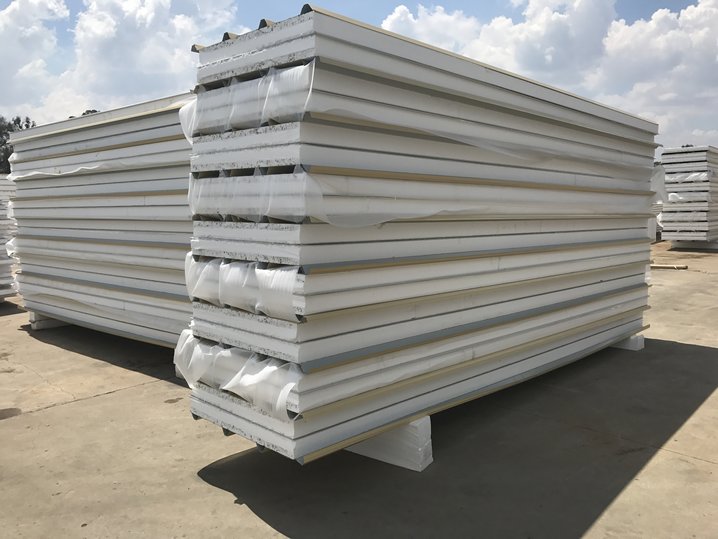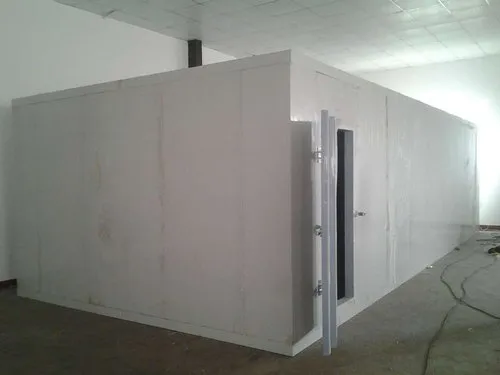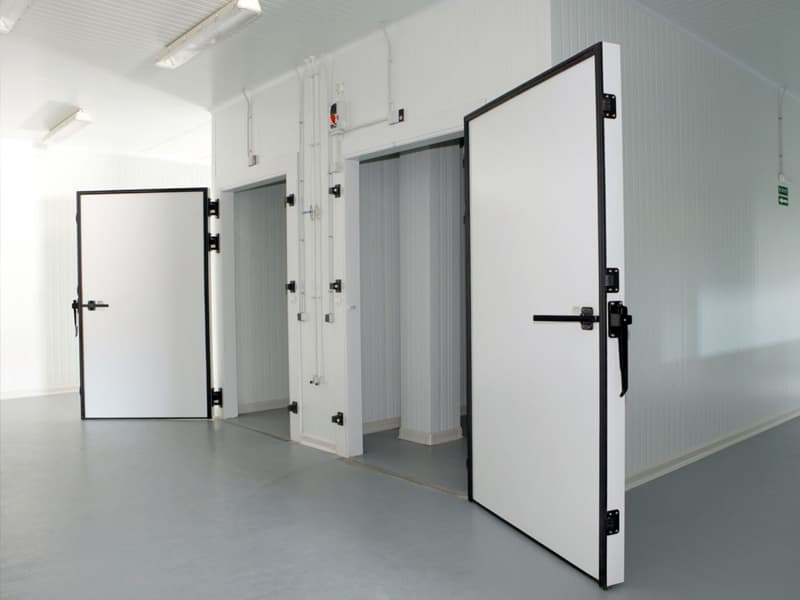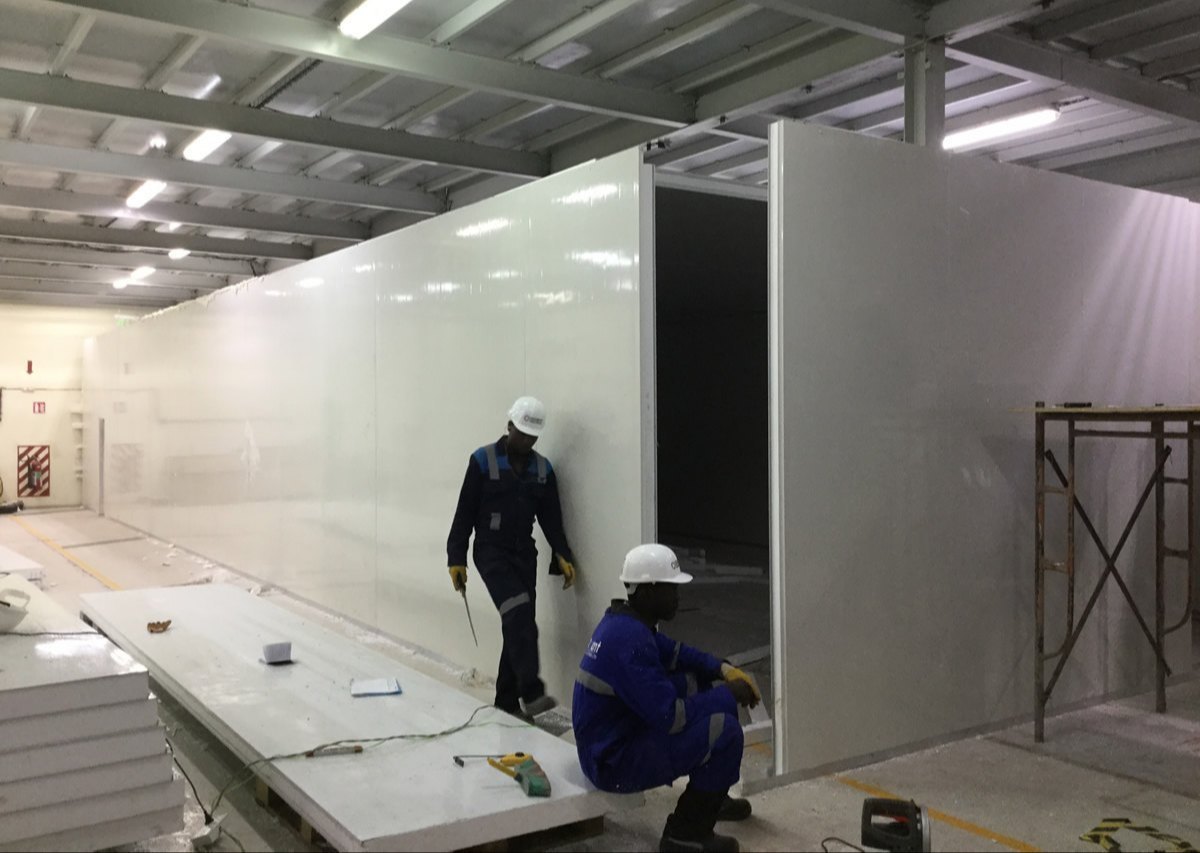Ever tried to keep milk fresh without a fridge? That’s your first clue into the importance of cold storage. In today’s world of global trade, fast food delivery, and precision medicine, cold storage systems like cold rooms, freezer rooms, and blast chillers are not just luxuries—they’re non-negotiable necessities.
These systems aren’t all the same, though. Each serves a unique role in preserving quality, safety, and compliance. So, whether you’re running a café, operating a warehouse, or distributing vaccines, this guide will break down exactly what each system does, why it matters, and how to make the most of it.
What is a Cold Room?
A cold room is a refrigerated space specifically designed to maintain a consistent temperature just above freezing. Unlike household refrigerators, cold rooms are larger, customizable, and suitable for bulk storage. They’re typically set between 0°C and 8°C (32°F to 46°F) to slow down bacterial growth and preserve perishable items like fruits, vegetables, dairy, and beverages.
Types of Cold Rooms
- Modular Cold Rooms: Built with prefabricated panels, they are easy to install, move, or expand. Great for businesses that are growing or adapting.
- Walk-in Cold Rooms: Larger, often permanent installations that allow staff to walk inside and retrieve inventory. Ideal for high-volume storage in restaurants or supermarkets.
Ideal Use Cases
Cold rooms are ideal for:
- Food processing plants
- Supermarkets
- Restaurants and hotels
- Florists (for flower preservation)
- Blood banks and labs
What is a Freezer Room?
A freezer room is a cold storage space that maintains temperatures well below freezing—commonly around -18°C to -25°C (0°F to -13°F). Unlike cold rooms that chill, freezer rooms freeze products for long-term storage.
Cold Room vs. Freezer Room
| Feature | Cold Room | Freezer Room |
|---|---|---|
| Temperature Range | 0°C to 8°C | -18°C to -25°C |
| Use Case | Short-term chilling | Long-term freezing |
| Suitable For | Dairy, drinks, veggies | Meats, ice cream, seafood |
| Relative Humidity | Higher | Lower |
Industries That Use Freezer Rooms
- Meat and seafood suppliers: To keep inventory safe for months.
- Frozen food manufacturers
- Ice production companies
- Pharmaceutical storage (especially vaccines and sensitive serums)
What is a Blast Chiller?
A blast chiller rapidly reduces the temperature of hot food items, typically from +70°C to +3°C within 90 minutes or less. Why so fast? Because slow cooling encourages bacterial growth, which can ruin food and pose health risks.
How It Works
Blast chillers circulate high-velocity cold air around the food to remove heat rapidly without affecting the food’s moisture or texture. Some advanced models can switch modes to act as a freezer too.
Common Uses
- Catering and food production: For pre-cooked meals.
- Hotels and bakeries: To prep items in advance.
- Hospitals: Ensuring patient meals are both fresh and safe.
- Frozen dessert makers: For quick freezing ice cream and sorbet.
Key Components of Cold Storage Systems
1. Insulation Panels
These panels are the backbone of temperature retention. High-density polyurethane foam panels with metal skins are used to minimize heat exchange with the outside environment.
2. Refrigeration Units
A typical system includes:
- Compressors: Compress refrigerant gas to raise temperature and pressure.
- Condensers: Cool the refrigerant into liquid form.
- Evaporators: Absorb heat from the room to maintain cool temps.
3. Temperature Control Systems
Modern systems use digital controllers, touch screens, and cloud monitoring to manage temperatures down to the decimal, even remotely.
The Importance of Cold Storage
Food Safety and Shelf Life
Cold temperatures slow bacterial growth, preserving texture, flavor, and nutrition. That means fewer spoilages, longer shelf life, and less waste.
Medical and Pharmaceutical Applications
Vaccines, insulin, and blood products require strict temperature control. Even minor deviations can ruin entire shipments, posing serious health risks.
Logistics and Distribution
Global shipping relies on cold chain logistics—especially for seafood, dairy, and pharma products. Cold storage ensures that products arrive intact, regardless of how far they travel.
Industry Applications
Hospitality & Food Services
Restaurants store large quantities of meat, dairy, and fresh produce daily. Cold storage allows for efficient prep and long-lasting freshness.
Retail & Supermarkets
Supermarkets use a combo of cold and freezer rooms to ensure products on shelves are always fresh—be it dairy, frozen pizza, or ice cream.
Farming & Agriculture
Freshly harvested produce is kept in cold rooms to delay ripening, improve marketability, and reduce spoilage before distribution.
Healthcare & Labs
Beyond vaccines, labs store reagents, blood samples, and specimens in carefully monitored cold environments.
Benefits of Using Cold and Freezer Rooms
1. Cost Efficiency
Bulk purchases and extended shelf life reduce repeat orders and waste. Cold storage units also lower labor costs due to streamlined operations.
2. Energy Savings with Modern Units
New-generation systems use energy-efficient compressors, smart doors, and LED lighting—reducing electricity bills significantly.
3. Better Inventory Management
Organized racking systems, real-time inventory tracking, and clear temp zones allow for better stock rotation and fewer expired goods.
Choosing the Right Cold Storage
Factors to Consider
- Type of product
- Volume of storage
- Required temperature
- Location and space
- Compliance requirements
Size and Customization
From compact modular units for kitchens to giant warehouse installations, cold rooms can be customized to fit almost any operation.
Mobile vs. Fixed Units
- Mobile units: Great for outdoor events, festivals, or emergencies.
- Fixed installations: Best for long-term, high-volume operations.
How to Maintain Your Cold Storage System
1. Regular Cleaning and Inspections
Monthly cleaning reduces mold, ice build-up, and hygiene issues. Don’t forget to inspect doors and gaskets for leaks.
2. Monitoring Systems and Alerts
Smart systems provide real-time alerts in case of temp spikes, door ajar incidents, or equipment failures.
3. Preventive Maintenance Tips
- Clean condenser coils quarterly
- Check refrigerant levels
- Lubricate fan motors
- Replace damaged insulation promptly
Challenges in Cold Storage
1. Power Failures
A few hours of downtime can mean hundreds of kilos of spoiled inventory. Invest in generators or UPS systems for emergencies.
2. Space Limitations
Cold rooms require sufficient airflow and clearance between products. Overcrowding reduces efficiency and cooling performance.
3. Regulatory Compliance
Food and medical sectors must adhere to local health and safety regulations. This may include:
- Routine temperature logging
- HACCP compliance
- Equipment certification
Innovations in Cold Storage
Smart Sensors and IoT
Internet-connected sensors monitor conditions 24/7 and send alerts to your phone or email if something goes wrong.
Eco-Friendly Refrigerants
To reduce the carbon footprint, many businesses now use natural refrigerants like CO₂, ammonia, or hydrocarbons.
Automation and AI Integration
AI systems now analyze usage patterns to optimize cooling cycles, saving energy and extending equipment lifespan.
Conclusion
Cold rooms, freezer rooms, and blast chillers are far more than industrial fridges. They are cornerstones of modern business, public health, and everyday life. Whether you’re preserving food, shipping medicine, or running a restaurant, understanding how these systems work—and how to use them—can save you money, reduce waste, and improve quality.
So next time you reach for fresh strawberries in winter or get a life-saving vaccine, remember—cold storage made it all possible.
FAQs
1. What temperature should a cold room be?
Cold rooms typically operate between 0°C and 8°C, depending on what’s being stored.
2. Are blast chillers energy efficient?
Yes. They’re designed for short, intense cooling cycles, using less power over time compared to regular chilling.
3. Can cold rooms be used for non-food items?
Absolutely! Think medical samples, cosmetics, chemicals, even electronics that require climate control.
4. What’s the difference between a blast chiller and a freezer?
A blast chiller cools quickly, ideal for hot items. A freezer maintains a consistent low temp, ideal for long-term storage.
5. How long do cold storage systems last?
With proper maintenance, most systems last 10 to 15 years, though compressors and fans may need earlier replacements.





